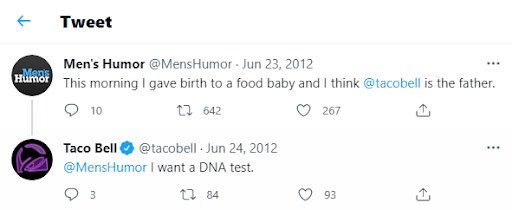Imagine coming across a life-changing product on Kickstarter — it’s one of those things you want to throw your money at. Once you’ve paid for it, you wait like a little kid does for Christmas. But do you remember when you were a kid how Christmas seemed to take forever? Well, in the case of a random Kickstarter you backed, it literally takes forever. By the time you get it delivered, it has lost all its magic, becomes underwhelming, and gets made fun of by YouTubers.
As a business, this is what happens when you operate customer service and marketing as completely different functions, with different objectives. While this approach serves well from an operational standpoint — it isn’t necessarily the case for customer engagement and growth.
When customers or leads come across your product first — it’s likely to happen through a marketing channel, be it social media, or online review platforms. And Marketing as a function is incentivized to generate more leads, regardless of other considerations.
Let’s explore why systems or processes like these aren’t optimal for growth and retention as intended — and what the consequences might be.
Table of Contents
- What Customer Service — Marketing Misalignment Could Cost
- 6 Ways to Align Customer Service and Marketing
- Unify, collaborate and prioritize
What Customer Service — Marketing Misalignment Could Cost
While not immediately evident, it’s in the later stages of the customer lifecycle where misalignment between the two functions starts to have an impact. Aggressive marketing can often bring in not-so-ideal leads and customers, who’d buy from you with heightened expectations. When these promises and expectations aren’t met, it leads to increased customer support tickets and overheads.
Customer support’s priorities are to ensure that the product is being used as per guidelines and educate customers with instructions, apart from minor troubleshooting. Marketing-induced expectations from new customers can make customer support’s job more difficult, as customers rely on support to fix things for them. This builds up a vicious cycle of marketing hype that often will disappoint customers, make it difficult for support to serve these customers, and lead to negative customer experiences and even churn.
“During the onboarding process, we provide our new clients with access to our tutorial videos and step-by-step guides created with collaboration with the marketing team. Additionally, our colleagues from marketing help us write the knowledge base and create visuals for it. Of course, this results in a better user experience for our customers and much less friction down the road as they start using our service. From there, most of their journey is smooth sailing.”
— Ana, Customer Success Manager at Sales.Rocks.
Potential downsides also include missing out on word of mouth from an exceptionally good product and support experience. There are brands out there that are recommended by their loyal customers for excellent customer service experience, and it becomes a passive growth channel for them.
So in a way — customer supportis the new marketing — because when done right, it has the potential to bring in new business. Similarly, marketing could amplify customer needs and concerns from support interactions data and use it to drive retention and product awareness, something customer support would otherwise accomplish.

Here’s Taco Bell making a play on a popular Twitter account bashing their reputation around the dietary troubles after having their food.
Now that we’ve seen what you’re missing out on — let’s explore ways to align your customer service and marketing channels to boost customer retention and growth.
6 Ways to Align Customer Service and Marketing
1. Have shared roles across teams
As we discussed earlier in the article, products with great customer engagement and satisfaction often have customer support and marketing teams creating cross-functional impact. This means taking up roles like reputation management outside the typical tasks in marketing and customer service can help both teams generate outsized results..
Have your customer service representatives contribute to marketing tasks like helping plan new campaigns and developing a product’s go-to-market. Similarly, the marketing department can contribute to tasks like adding content to a knowledge base, using customer feedback and support data for case studies, etc. Adopting this approach allows your team to have a much wider perspective, making it easier to attract and retain customers.
2. Build a unified customer experience
Customers often look at all your communication platforms as one — i.e. every one of them represents the brand and its service, no matter which is which. These channels include marketing emails, social ads, chatbots on marketing websites, customer support phones, and email, etc. Successful digital advertising for SaaS hinges on using these platforms cohesively to reach potential customers at every touchpoint. When there’s an inconsistency in experience between the channels, your customer satisfaction metrics may immediately see a downfall.
Build marketing and customer service playbooks factoring this in. Let customer service teams know what marketing campaigns customers who raise support tickets are coming from. This makes it easier for reps to build context on customer expectations. Review all your customer touchpoints, from discovery to purchase to retention, including support, sales, and marketing engagements. Remap them to engage customers and leads in a brand-friendly, consistent manner, which will help you improve conversions from those touchpoints while delivering a great experience.
3. Use social media support as a growth channel
The majority of brands’ social media accounts are often only used for occasional marketing announcements, and having a presence on a platform. However, with the majority of social media engagement favoring B2C brands, B2B businesses might feel out of place on social platforms. That being said, social platforms make for great support channels for B2B companies.

Here’s an example with The Hustle’s Marketing Director getting involved with a customer and offering help, along with the brand itself. With both the brand and the executive involved, the thread will likely reach thousands and demonstrate its commitment towards customers.
Search for users on social media channels who’re talking about you and your products. Brands often only check their mentions, but a lot of engagement happens without mentions as well. See what your audiences are talking about, and jump into those conversations. Find ways to add value to these conversations, and entertain them in ways that align with your brand. Since social media conversations are public, your replies are more similar to a blog post in terms of its reach, than say, an email, or a direct message on Linkedin.
4. Make it easier for customer support to upsell
The interactions customers have with your customer support team can be leveraged by marketing to identify upselling opportunities and drive more business.
Make your marketing team go through the most common issues customers face. This will help them come up with scripts to pitch to your existing customers while upselling or cross-selling. Also, mark out support issues and tickets that need the user to upgrade, or buy another product due to limitations of their existing plans. Get your marketing team to work and build CTAs that’ll help convert such users while they’re trying to access support for those issues.
Neal Taparia, who runs gaming site Solitaire Brain, explains, “Our marketing team worked with our customer service team to set up unique email drips based on customer inquiries that would encourage users to subscribe to our premium solitaire games. The collaboration increased our acquisitions by over 15%.”
5. Build user personas factoring support data
It’s fairly well known that as marketers, you need to know your customers really well. While some marketers do reach out to customers, it’s a rarity and doesn’t tend to happen organically. On the other hand — support interacts and listens to customers all day, and knows them better than anyone else on your team. Use this to your advantage, and build user personas and profiles for marketing, based on insights and information from your support operations.
Support tickets will often contain appreciation from customers — find what these are about, and use it in your marketing messaging. Similarly, look for customers’ annoyances that might be hiding in plain sight, dig into support data, and use it to tweak your marketing strategy and make it more impactful. Use shared inboxes for handling support, so both teams have access to customer support data, making collaborating on user personas and messaging easy.
6. Integrate Support and Marketing workflows
Apart from setting up shared priorities, create workflows and tasks that open lines of communication between the two teams. There’ll be times when Support needs to be involved with Marketing and vice-versa, such as when aligning customer support and marketing goals and such instances tend to be disruptive under conventional settings. On the other hand — getting both teams well versed with each others’ workflows makes it possible to collaborate, develop new initiatives, and start working on new projects with minimal friction.
This is where you can set up tools and services to be equally accessible by both teams. Onboard new and existing team members on the other teams’ processes. Use email tags to mark support and marketing issues, so it’s easier to filter important emails and support tickets. Share templates between the teams for a consistent customer experience. Build processes with transparency, and always review new changes with other teams, to see if it affects customers and the business in ways you didn’t anticipate.
Unify, collaborate and prioritize
Customers don’t care if your marketing and support teams are two different functions. While both teams bring in people with different skill sets, their priorities are quite similar if you look at the outcomes they generate, i.e. growth in customer base, retention, and improvement in the bottom line.
Once you unify the experience across all marketing and customer support channels, customers will trust you more and stay with you for longer. As a consequence, your customer LTVs will improve, and boost profitability further as marketing brings in more leads.
Resources you’ll love:
- Hubspot’s post on 10 ways marketing and customer service can work together
- Pardot’s article on why customer service should be part of your B2B marketing strategy
- Customer experience trends in 2022 by Forbes


































